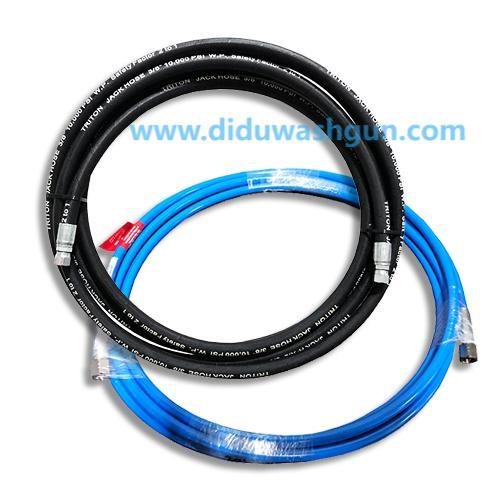When selecting a High pressure hose pipe , the wide range of options available can be overwhelming. From varying materials to different pressure ratings, understanding the key factors is essential to making an informed choice. Though the factory’s production methods are important, what truly matters is the suitability of the product for specific applications. At DIDU, we provide a variety of high-performance hoses that cater to diverse needs across different industries.
The first step in choosing a high pressure hose pipe is understanding the type of fluid or gas that will be transported. Whether it’s water, oil, or air, each substance has specific compatibility requirements with the hose material. For example, water-based applications commonly use hoses made from synthetic rubber or thermoplastic elastomers due to their excellent resistance to water and weathering. On the other hand, oil-based applications often require hoses with internal linings resistant to oils and chemicals.
Next, consider the pressure requirements. The high pressure hose pipe you select must be capable of withstanding the maximum pressure in your system. This is where pressure rating becomes crucial. Hoses are often rated based on their burst pressure, which indicates the pressure at which the hose will fail. It's always a good idea to choose a hose with a pressure rating higher than the maximum pressure your system is expected to handle. This ensures an added safety margin, reducing the likelihood of hose failure.
Another important consideration is the hose’s flexibility and ease of handling. In environments where the hose will be repeatedly moved or manipulated, a flexible hose is essential. However, this should not come at the cost of strength. Ideally, you want a hose that is both flexible and durable enough to endure the rigors of your application. Additionally, hoses with higher tensile strength or braided wire reinforcements offer greater resistance to wear and tear.
The durability of the hose’s outer cover is also a key factor in its selection. For industrial environments that involve rough handling, exposure to UV light, or extreme temperatures, a hose with a tough, abrasion-resistant outer layer is necessary. This cover acts as a shield against damage caused by external factors, extending the hose’s service life.
Furthermore, length and diameter are vital in making sure the hose fits your specific operational setup. Longer hoses may be required for machines with a wider reach, while larger diameters allow for a higher flow rate. However, it’s important to strike a balance—too large a diameter may make the hose unwieldy, and too small may restrict the flow of fluid.
Finally, environmental conditions, such as temperature extremes, chemicals, or exposure to sunlight, should influence your decision. For instance, high pressure hose pipes used in high-temperature settings, like pressure washing equipment, must be able to tolerate high heat without degrading.
For those in industries like construction, manufacturing, or agriculture, choosing the right heavy-duty hose can make a significant difference in productivity and cost-efficiency. By focusing on material compatibility, pressure ratings, flexibility, durability, and the environment in which the hose will operate, you can ensure that your equipment works smoothly and safely.
To explore a range of high-quality pressure hoses tailored to your needs, visit diduwashgun.com .



